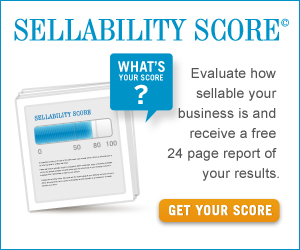Turning 71 in Canada is one of the most important ages when it comes to registered retirement income (RRIF) planning. The decisions you will have to make in that one year will significantly impact your financial planning for retirement.
Here is a list of some little known factors that could affect your RRIF payout in retirement:
- Your younger spouse’s age.
- Without guidance, you’ll miss your final years tax deduction.
- Using the wrong financial planning software.
- Your overall asset allocation.
Managing these four items alone properly can make your transition a confident one. Making a mistake on one of them could cost you dearly.
Your Spouse’s Age
It’s your RRIF right? So, what does your spouse’s age have to do with anything? Short answer: A Lot!
Here’s why.
When you turn 71, you are required in Canada to convert your Registered Retirement Savings Plan (RRSP) into a Registered Retirement Income Fund (RRIF). This is when Canada Revenue Agency (CRA) now get’s their share of your pie.
All those years of dilligently saving into your RRSP and getting that nice tax deduction are now over. Now it’s CRA’s turn.
In essence, CRA is now requiring you to de-register a minimum amount of the balance of your plan each year and bring it into your taxable income. Now, the minimum amount you are required to remove from your plan each year is pre-determined by CRA.
But, if you have a spouse who is younger than you are, you can elect to use their age to calculate the minimum amount you are required to withdraw each year – which will be less than the pre-determined rate if you accept the default for someone turning 71.
So, if your spouse is younger than you when you turn 71 and are converting your RRSP to a RRIF, elect on the application form to use your spouse’s age to calculate the required minimum that must be de-registered each year. This will lower the amount and help to keep your overall tax bracket down.
(Further information on this can be found on my free Podcast episode titled: Is Retirement Planning Just A Waste Of Time?)
Without Guidance, You’ll Miss Your Final Year’s Tax Deduction
When you turn 71 and convert your RRSP to a RRIF, you are doing two things. One, you are setting up your plan to de-register a minimum amount to be taxed on each year and two, you are closing the door for ever on your ability to contribute to an RRSP.
OK, but there’s one problem. If you have earned income in the year you turn 71, this will generate for you RRSP contribution room that you should be able to use to help offset your next years taxable income.
But, on December 31st of the year you turn 71, you close the door on your ability to contribute to an RRSP. So, you risk losing this valuable contribution room you created with your income in the year you turned 71.
Unless you take advantage of the rules.
The RRSP rules state that you will pay a 1% penalty fee on any amount you contribute to an RRSP that exceeds your allowable overcontribution limit of $2,000. So, here is what you do.
You should be able to estimate what your earned income is for the year you turn 71 in the last month of the year (December). Take 18% of that figure (or the RRSP maximum contribution limit for the yeaar, whichever is less) – reduce it by your estimated Pension Adjustment for the year – to determine a close estimate of what you should be allowed to contribute to an RRSP in your 72nd year. Then, make that full contribution in December of the year you turn 71.
What you have done is put the funds into your RRSP (which you are allowed to do because the door on your RRSP contribution doesn’t close until December 31st of your 71st year) prior to the end of the year. Now, this will be seen as an overcontribution but it will only be so for one month. If CRA realizes this, they have the right to fine you 1% of this amount that exceeds the $2,000 overcontribution limit. But, what you have done is create an RRSP tax deduction for your next year because you are able to carry forward any unused contributions to a future year.
Deduct this amount against your income in that year. I guarantee you that the amount of your tax refund will far exceed the potential 1% penalty fee that CRA could levy on you.
Using The Wrong Finacial Planning Software
What do you mean the wrong financial planning softwar? It’s math. And, math is math. Isn’t it?
Well, sure but, using the wrong math at the wrong time will force you to make a false assumption – for simplicities sake.
Here’s what I mean.
If your finanical planning softwar (or the financial planning software that your financial advisor is using on your behalf) asks you to key in the assumed average tax rate that you expect to pay during retirement, you’re in for trouble.
You see, when you look at cash flow in retirement to the level of detail that I have, you see one key thing. You see that your cash flow changes significantly during retirement because of our tax system in Canada.
You just learned that at age 71, you must convert your RRSP to a RRIF. This means that you will now be forced to add to your other sources of income the amount that is de-registered from your RRIF – wheter you need that income or not.
In eseence, what is happening is that your tax bracket is likely going to be higher in your 72nd year onward.
Prior to that, you would have lived off of your retirement savings that were non-registered or in your Tax Free Savings Account (TFSA). This means that the income you received from these two sources would be tax preferred compared to the income you receive from the proceeds from a RRIF. So, your tax bracket leading up to at 72 will likely be lower than beyond this point.
So, if your financial planning software is asking you to average your overall tax rate during retirement, you are over taxing your early retirement years and under taxing your later retirement years.
What this does is it forces you to overcompensate by investing more during your wealth accumulation years than what is actually required.
I have a problem with this.
The problem I have is that financial planning is about assisting you to find that happy balance between living life for today and planning to have enough to fund your tomorrow. But, we are not guaranteed a tomorrow. So, if you are paying more than you need into your financial plan for tomorrow (because your finanical planning software told you you needed to), and you don’t make it to tomorrow – I see this as the equivalent of a missed living opportunity.
Perhaps it could have been some extra cash flow to take a few more trips. Or, to buy that bigger house or nicer car.
Bottom line is that those extra funds were not needed for tomorrow but you didn’t get a chance to use them today. And that is wrong.
The answer is to ensure that you (or your financial planner) is using software that produces a tax return each year based on the cash flow that is coming from the plan.
So, if you are being asked (or if your financial planner is keying in) the average tax rate to be used in your finanical planning model, you’re using the wrong software and sacrifincing too much for the tomorrow that you can’t guarantee will come.
(Check out my free Podcast episode: A Little Financial Knowledge Can Be A Dangerous Thing)
Your Overall Asset Allocation
If you’re paperboy qualifies to invest in the same investment solution that you are investing in and you have amassed at least $100,000 of liquid investable assets – you are investing in the wrong solution.
Mutual funds are great – to start out with.
But, as your wealth accumulates, so to should your investment solution. And one of the main benefits from doing so will be your ability to truly manage the asset mix of your plan.
Not the asset mix of your RRSP or your Non-registered account. But the asset mix of your overall plan which will greatly affect your tax situation.
In essence, if you are serious about wealth accumulation, you have probably invested in RRSPs and non-registered accounts. But, chances are also pretty good that you have the same asset mix for both portfolios. This is wrong.
What you should strive for is a balanced portfolio with the inefficiently taxed investments (Fixed Income – Bonds) in comprising your entire registered portfolio and all of your equity or divident producing investments comprising your non-registered portfolio.
Overall, the asset mix is still balanced but you have tax-sheltered the inefficient investments and let the tax efficient investments keep their tax efficiency. This will keep the overall return on your portfolio higher because you will be losing less to tax each year. Which we could all use more of – especially now.






 In this episode, I interview Roger Thorpe, President of Thorpe Benefits and we have an in-depth discussion about Employee Benefits. Roger reveals to us his perspective on how business owners can better utilize their group benefits plans to enhance their employee experience.
In this episode, I interview Roger Thorpe, President of Thorpe Benefits and we have an in-depth discussion about Employee Benefits. Roger reveals to us his perspective on how business owners can better utilize their group benefits plans to enhance their employee experience.

 Our very own Scott Plaskett, CFP was invited to The Business News Network Studio’s to discuss a very important topic:
Our very own Scott Plaskett, CFP was invited to The Business News Network Studio’s to discuss a very important topic: Prevention is better than cure
Prevention is better than cure



